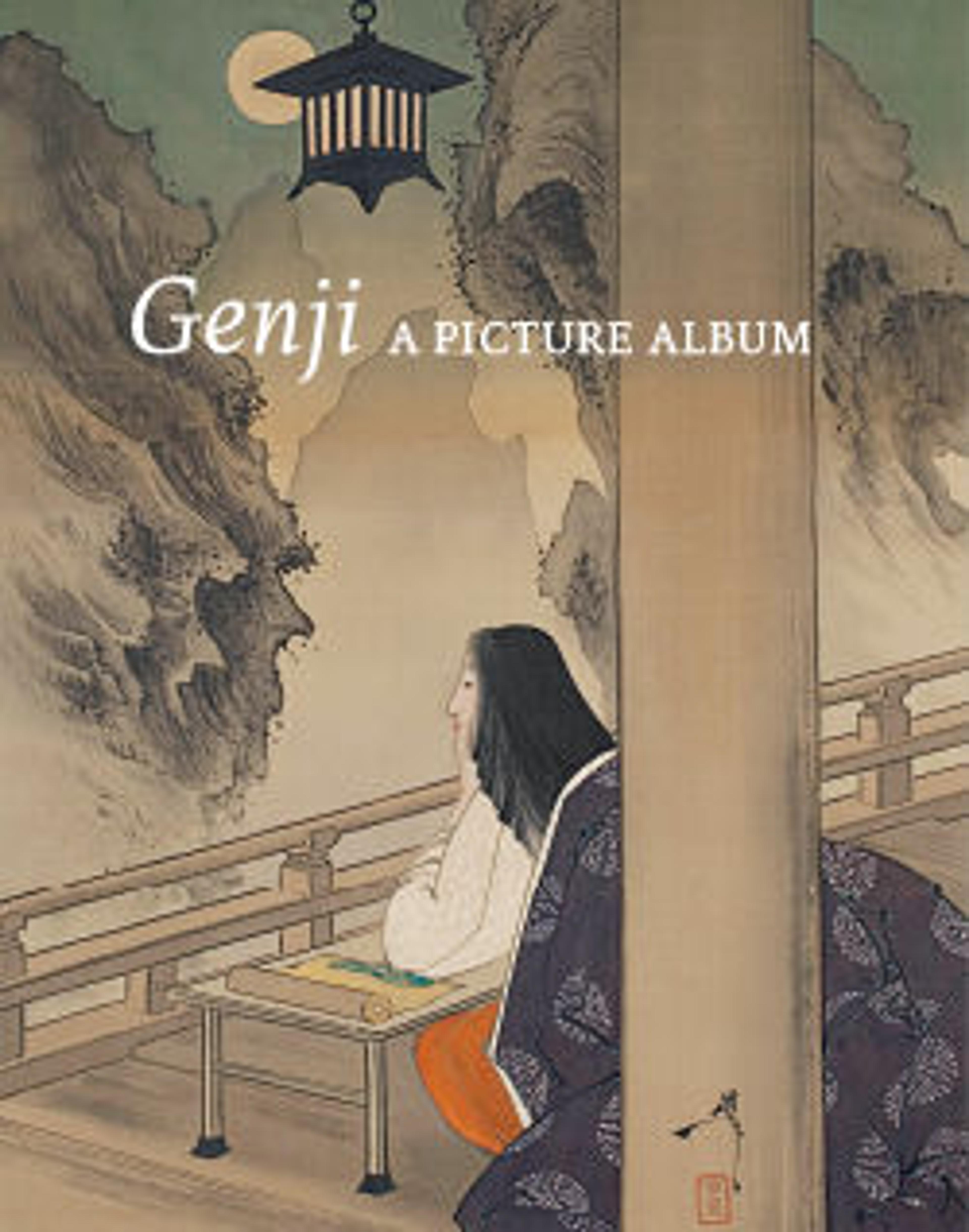Stacked Food Box (Jūbako) with “Whose Sleeves?” (Tagasode) Design
This elegant food box, created for a celebratory meal, features garment racks draped with kimonos and clothing accessories. Such images were called “Whose Sleeves?” (Tagasode), a phrase used in waka poetry that here suggests the absent but presumably elegant owner of the depicted garments. Such imagery became popular on folding screens and on decorative arts from the late sixteenth century onward.
In this design, the lower panel of the lacquer stand includes a scene from Chapter 51, “A Boat Cast Adrift” (Ukifune), in which the amorous Prince Niou takes Ukifune away by boat on a cold early spring day to a mansion across the Uji River. On the way, they stop at the Isle of Orange Trees and exchange poetry, the moment captured on the box.
In this design, the lower panel of the lacquer stand includes a scene from Chapter 51, “A Boat Cast Adrift” (Ukifune), in which the amorous Prince Niou takes Ukifune away by boat on a cold early spring day to a mansion across the Uji River. On the way, they stop at the Isle of Orange Trees and exchange poetry, the moment captured on the box.
Artwork Details
- 誰ヶ袖蒔絵重箱
- Title: Stacked Food Box (Jūbako) with “Whose Sleeves?” (Tagasode) Design
- Period: Edo period (1615–1868)
- Date: 18th century
- Culture: Japan
- Medium: Lacquered wood with gold and silver hiramaki-e, gold- and silver-foil application, and mother-of-pearl inlay on gold nashiji (“pear-skin”) ground
- Dimensions: H. 10 5/8 in. (27 cm); W. 8 7/8 in. (22.5 cm); L. 8 1/4 in. (21 cm)
- Classification: Lacquer
- Credit Line: Mary Griggs Burke Collection, Gift of the Mary and Jackson Burke Foundation, 2015
- Object Number: 2015.300.288a–e
- Curatorial Department: Asian Art
More Artwork
Research Resources
The Met provides unparalleled resources for research and welcomes an international community of students and scholars. The Met's Open Access API is where creators and researchers can connect to the The Met collection. Open Access data and public domain images are available for unrestricted commercial and noncommercial use without permission or fee.
To request images under copyright and other restrictions, please use this Image Request form.
Feedback
We continue to research and examine historical and cultural context for objects in The Met collection. If you have comments or questions about this object record, please contact us using the form below. The Museum looks forward to receiving your comments.
